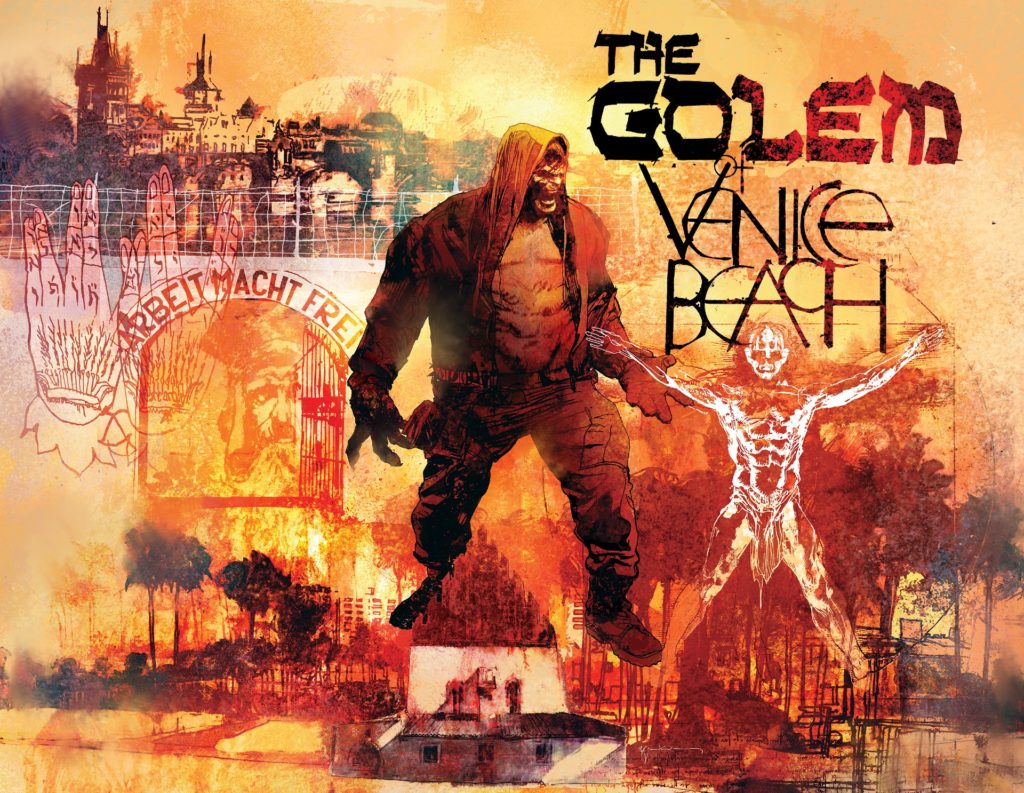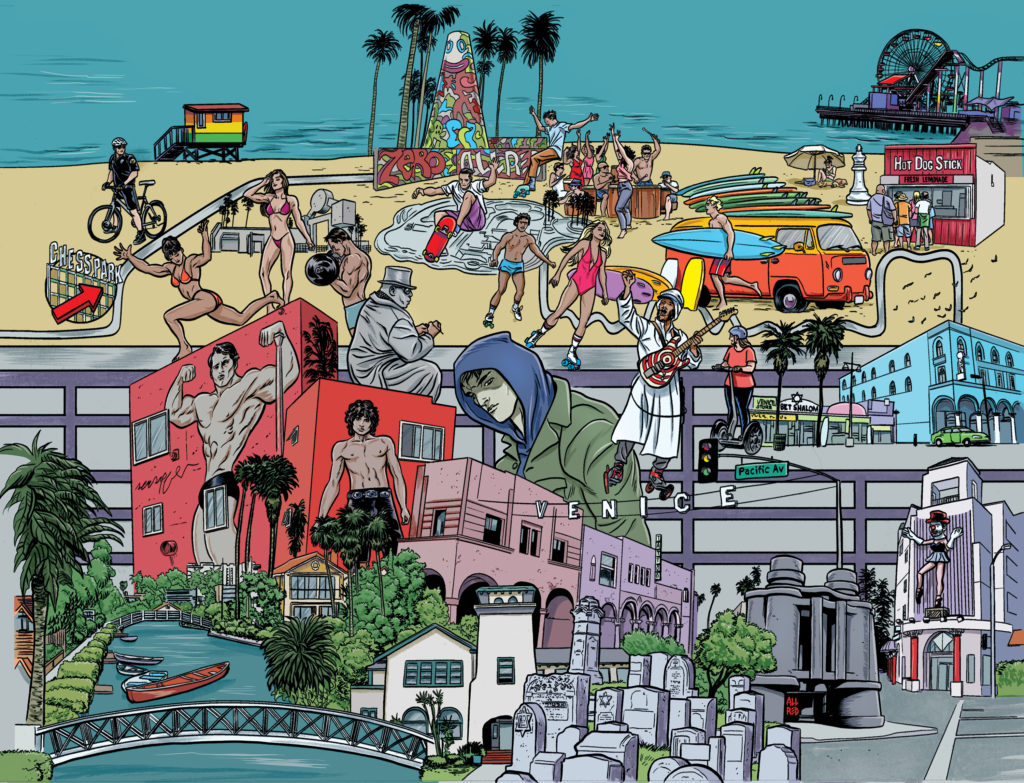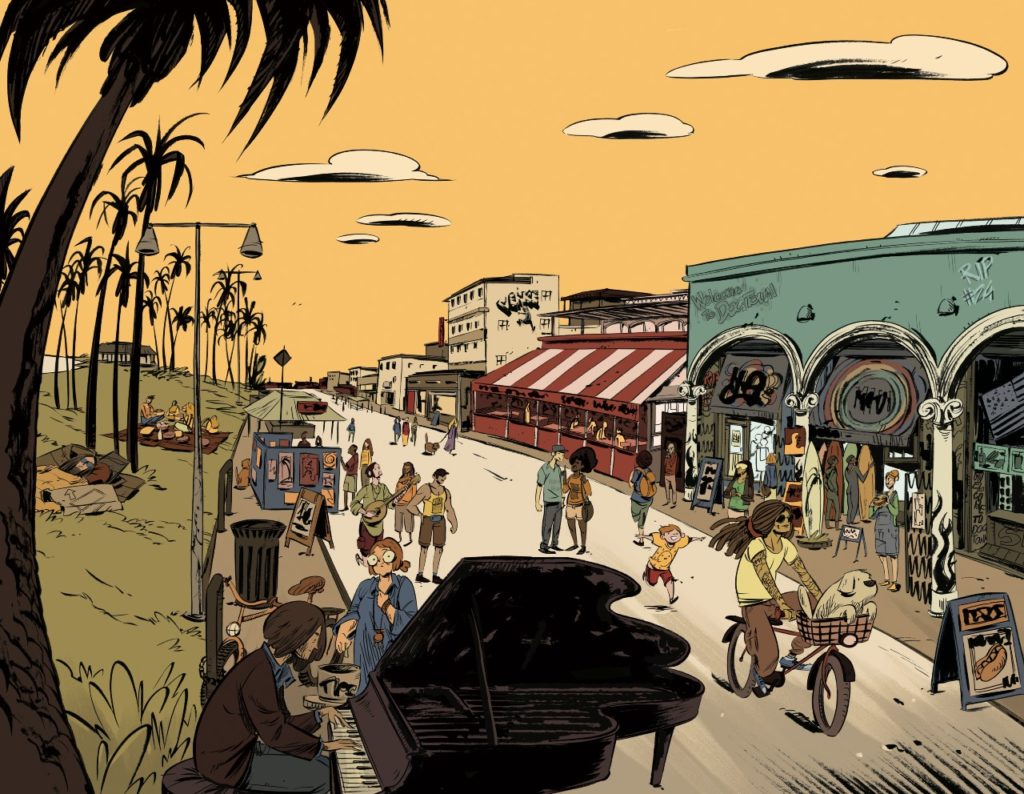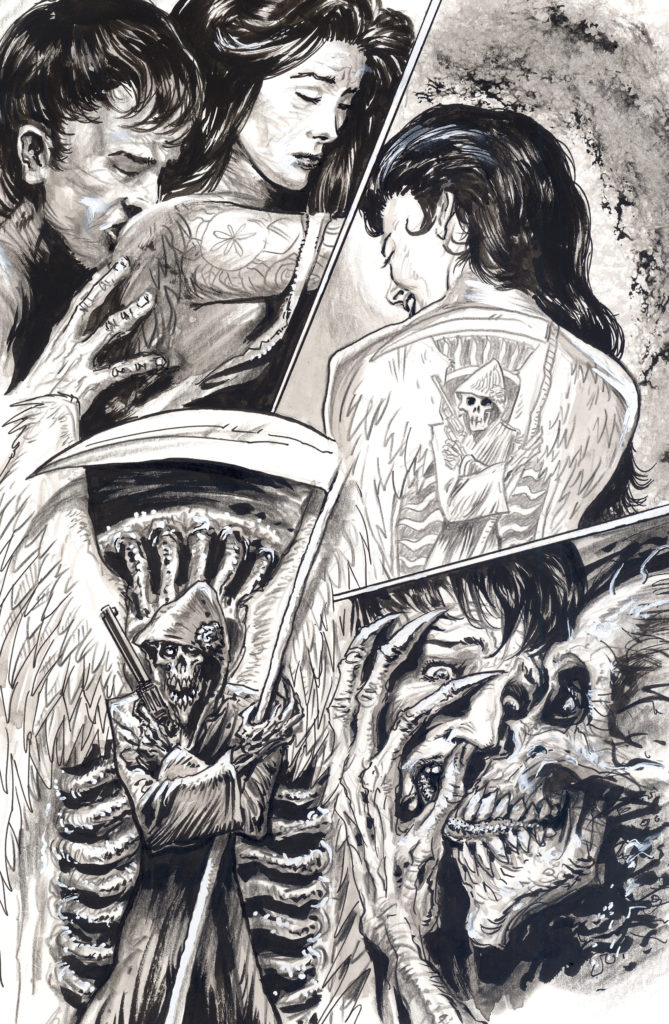
What happens when a centuries-old golem finds himself in contemporary southern California, in a world of skateboarders, tattoo artists, and rival factions with conflicting agendas? That’s the story at the heart of a new book, The Golem of Venice Beach. The forthcoming graphic novel, from writer Chanan Beizer and artist Vanessa Cardinali, features contributions from a host of comics legends. There’s currently a Kickstarter campaign up and running to fund the project. I spoke with Beizer and Cardinali about the graphic novel’s origins and the expansive approach the book takes to a host of artistic styles.
Golems aren’t the only cultural tradition that makes an appearance in this narrative. How did you determine the full scope of this narrative, in terms of mysticism and folklore?
Chanan Beizer: Los Angeles is a fantastic mélange of different customs. I tried to add spices from other cultures to my strong foundation in Judaism. Some may not know this but the Jewish study of mysticism, Kabbalah, which according to legend was used to create the Golem, was first written down by the Spanish scholar Moses de León. So there already is a connection between the Golem and Spanish traditions. Living in SoCal, I’m well aware of Spanish and more specifically Mexican culture. The goal was to try to inter-weave different folklore into one cohesive story.

The book’s title is immediately evocative. Was there one moment where that juxtaposition of old and new came together?
Beizer: I had the idea of a Golem in today’s Venice Beach for a while but I had a hard time coming up with a title. It started off as a film script and I was a member of a screenwriting group consisting of Columbia Film School grads here in LA. I recall one of the group pitching an idea she called “The Pit Bull of Park Avenue”. I can’t swear if there actually was a light bulb going off above my head but it immediately clicked with me – “The Golem of Venice Beach”. It seems so obvious now but titles are hard.
The Golem of Venice Beach abounds with intricate scenes, from images of the neighborhood to the tattoos that loom large in the plot. What was the most challenging aspect of creating artwork for the book?
Vanessa Cardinali: The most challenging aspect was to try to convey as much as possible the vibe of Venice beach! Chanan sent me many photos for reference, so much so that at the end of the book I feel a bit like I’ve been there! The part with the tattoos was very interesting to create, I learned about gang tattoo styles and it was a lot of fun.

At what point in the project did the different artists come on board? And how did you determine whose art would fit in with what section?
Beizer: The story always had three parts to it. An origin in 16th century Europe, resurrection during World War 2, and modern day Venice Beach. It seemed natural to me to get different artists for each part. Once my editor, Chris Stevens, came on board we tried to figure out which artists to contact. Chris suggested the legendary Bill Sienkiewicz to create not only the origin but also the cover. If we could get Bill to commit, it would help in convincing other artists to join the project. Luckily Bill agreed. With that, Chris was able to convince the fabulous Jae Lee to draw the World War 2 pages. We kind of both discovered Vanessa Cardinali, the artist for the Venice Beach section. I think having Bill and Jae attached was exciting for her as well. Then it was a process of figuring out the additional art I had in mind, and matching up artists that Chris could contact. Michael Allred, great with complicated design elements, was a natural for what I described as a Map of Venice Beach. Similarly, Paul Pope has an incredible knack for creating young characters and he not only agreed to draw a beach scene featuring two teens and the Golem, he also designed these two characters that steal every scene they’re in. I wanted a horror element and who better than Stephen R. Bissette, whose art on Swamp Thing has become iconic. And the final piece was Nick Pitarra for a stunning Boardwalk spread that sort of reminds me of the closing credits to Buckaroo Banzai. It’s an amazing roster and I feel very fortunate to have them as contributors to this book.

What was the biggest challenge you faced as you developed this graphic novel?
Beizer: The biggest challenge was to keep moving forward over the years. When I first decided to turn my story into a graphic novel, I didn’t even know how to write a comic book script. So, I took a class at UCLA called “Writing for Sequential Art”. When the class ended, most of the students continued to meet at my place for a comic book writing group. They really helped me to develop and complete the graphic novel over the years. I don’t know if I ever would have finished if it wasn’t for their encouragement, especially those who stuck with me from the very beginning all the way to this point.
Cardinali: The biggest challenge, but also the best part was certainly that of being able to collaborate with comic superstars! It was very beautiful and stimulating even if at the beginning I feel some pressure!
Follow Vol. 1 Brooklyn on Twitter, Facebook, and sign up for our mailing list.
